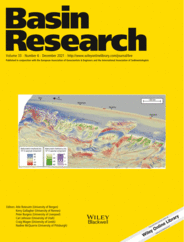
Full text loading...
We look at structural variation along the flanks of a rift basin to show how this controls the sediment input and in turn the syn‐rift facies found in the depocentre. The presence of a pre‐rift salt layer can be shown to enhance intra‐slope accommodation space which limits sediment input into deeper basin along with controlling the topographic evolution of rift flanks.
Pre‐rift salt controls structural style variability within rifts by decoupling sub‐ and supra‐salt faults. However, the way in which this variability controls sediment erosion and dispersal, and facies distributions within the coeval syn‐rift stratigraphic succession, remains poorly known. We here use 3D seismic reflection and borehole data to study the tectono‐stratigraphic development of the Halten Terrace, offshore Mid‐Norway, a salt‐influenced rifted margin formed during Middle to Late Jurassic extension. On the eastern basin margin, the rift structural style passes southwards from an unbreached extensional growth fold dissected by numerous horst and graben (Bremstein Fault Complex [BFC]), into a single, through‐going normal fault (Vingleia Fault Complex [VFC]). This southwards change in structural style is likely related to the pinch‐out of or a change in the dominant lithology (and thus rheology) within a pre‐rift (Triassic) evaporite layer, which was thick and/or mobile enough in the north to decouple basement‐ and cover‐involved faulting, and to permit extensional forced folding. As a result, the salt‐influenced BFC underwent limited footwall uplift, with minor erosion of relatively small horsts supplying only limited volumes of sediment to the main downdip depocentre. In contrast, the VFC, which was directly coupled to basement, experienced significant uplift and extensive footwall erosion. The footwall of this structure also locally underwent salt‐detached gravity gliding and collapse as the pre‐rift detachment was tilted. Our results show that where through‐going normal faults develop along the rift flanks, the presence of a pre‐rift salt layer will suppress the topographic expression of the footwall. The pre‐rift salt layer may however facilitate footwall collapse and limit the volume of sediment supplied to downdip basins. Our results also show that variable topography along the rift flanks facilitated the development of relatively small, localised, intra‐rift flank accommodation that trapped flank‐derived sediment, and which meant basins nearer the rift axis were starved of sediment.
]
Article metrics loading...

Full text loading...
References


Data & Media loading...

